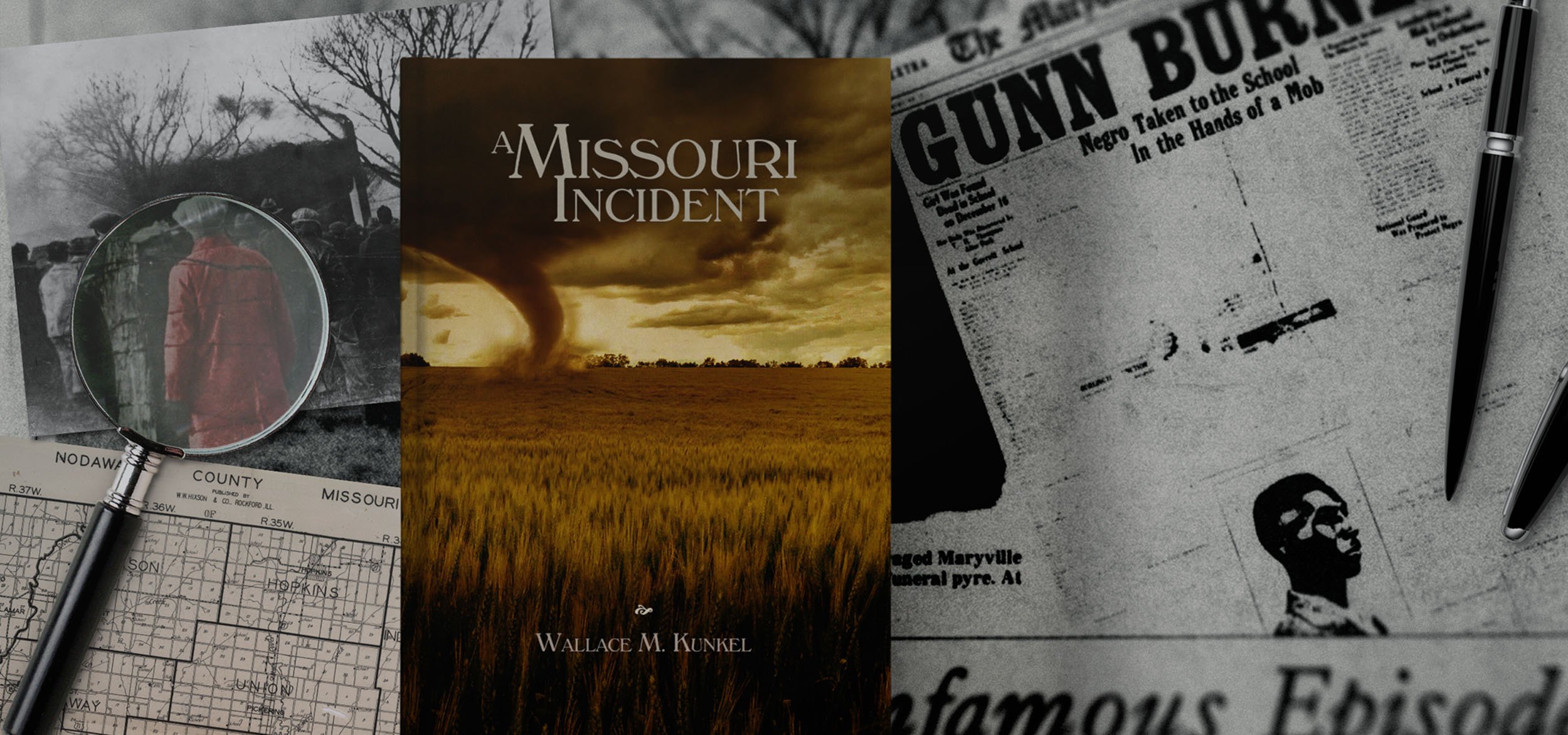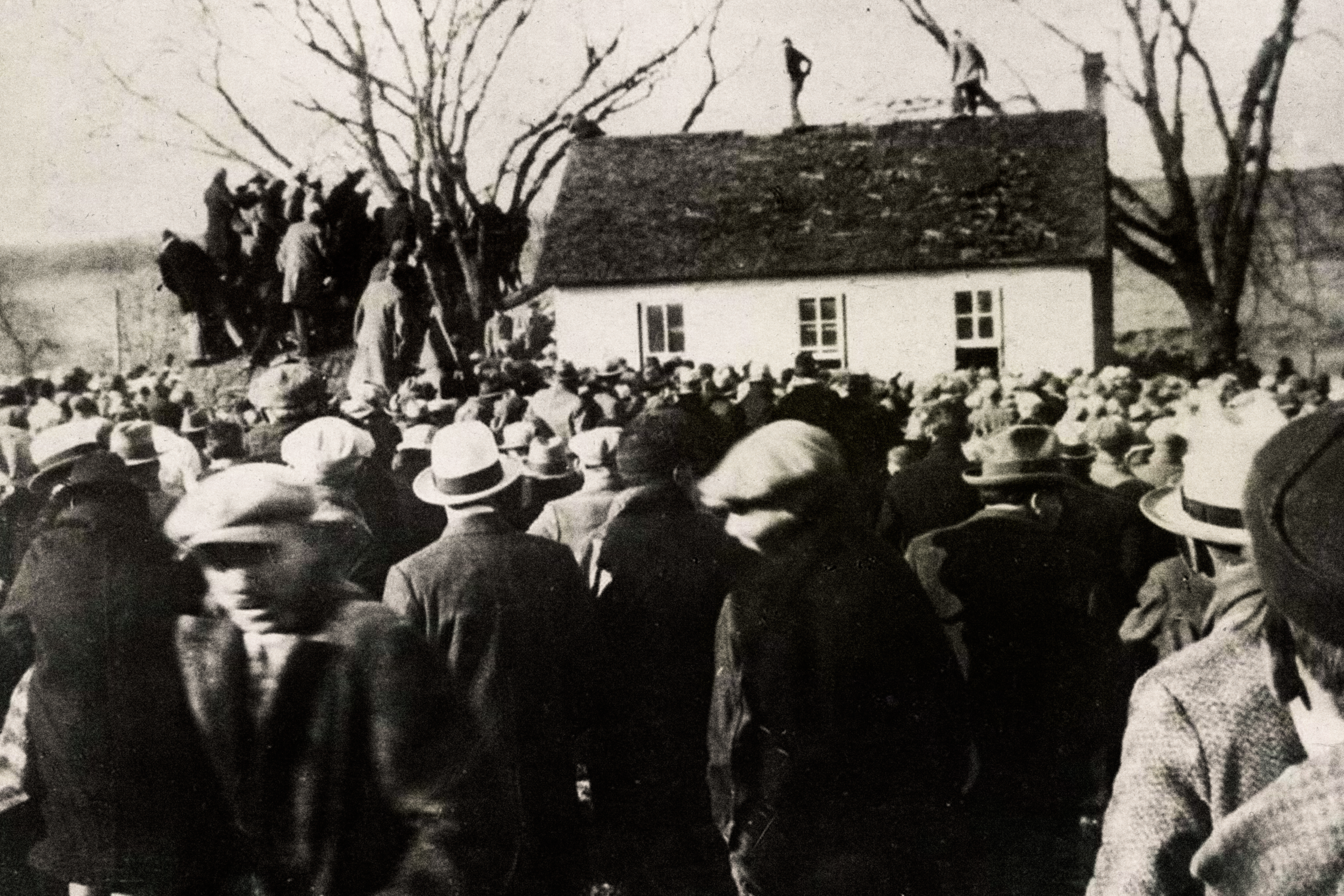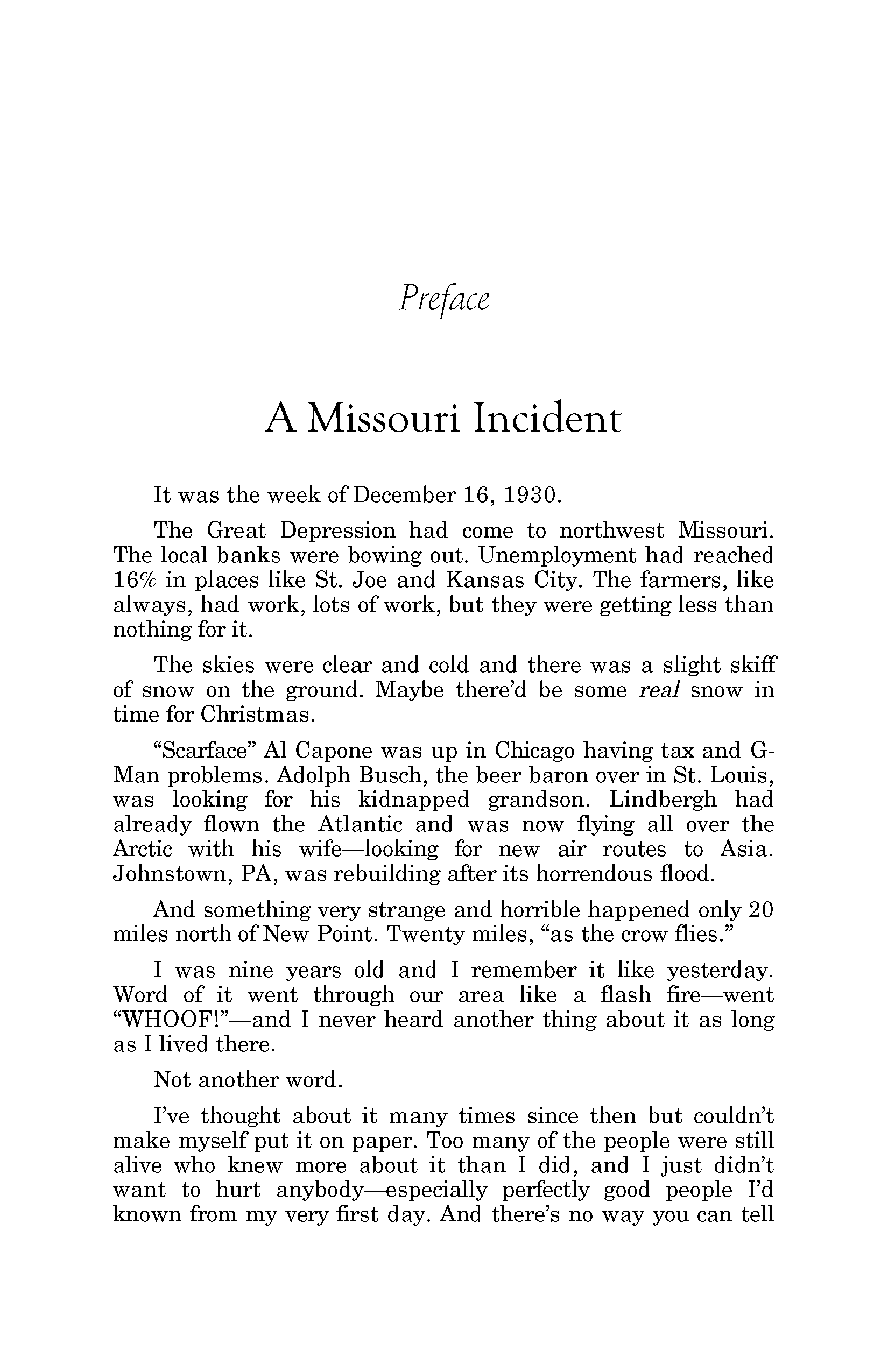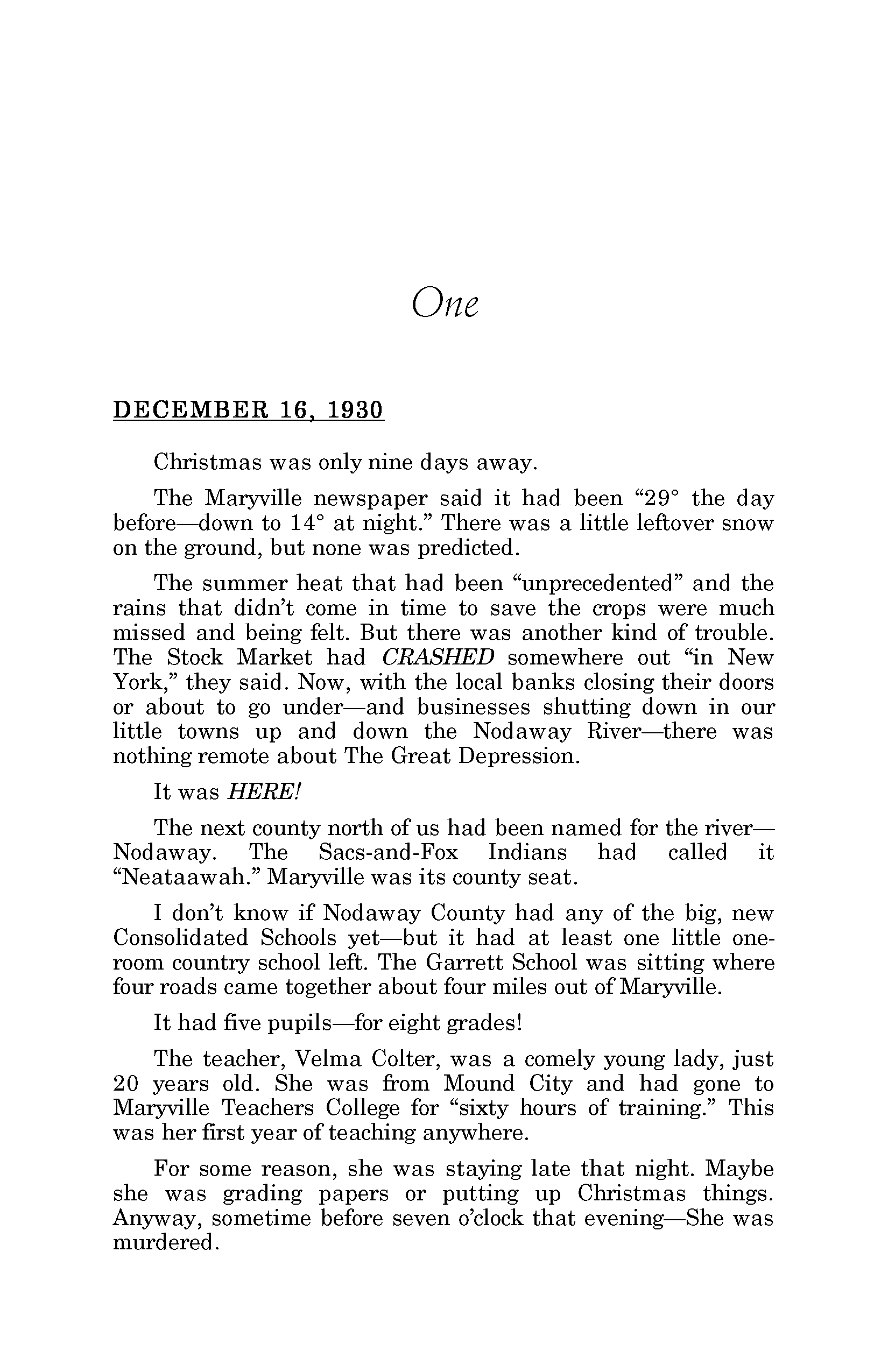
Now available for the first time…
in Hardcover & Paperback Editions
"I was nine years old and I remember it like yesterday. Word of it went through our area like a flash fire — went “WHOOF!” — and I never heard another thing about it as long as I lived there. Not another word."
This is an autobiography — the true story of a tiny Missouri town (1920-1930) — the murder of a teacher in a one-room school, and the lynching of the young, innocent black man, Raymond Gunn.
Introduction —
by Mary B. Walsh, only daughter of Wallace M. Kunkel
Not long before my father, the author of this book passed away, he entrusted me with his manuscript. I considered it an honor, but more that that a very significant responsibility. I was well aware of the many sleepless nights he spent engrossed in the memories of his youth, weaving his stories together as only he could, and his excitement at its completion.
Wallace Kunkel was not fond of editors or the editing process. Although his desire was to see this book published, he dreaded the thought of a stranger making changes, altering his story in any way. I never fully understood his apprehension, until I experienced the editing process firsthand. His fears were well founded. We would have to go a different route with his memoir. This book required a very special editor.
Forward
In the month of March 1997, I stood beside my Dad’s hospital bed, enjoying our conversation as always. As we spoke, relaxed and comfortable in each other’s presence, another part of my mind attempted, without success, to envision my world without him. He had just finished editing several chapters of a manuscript I was writing; I, in turn, had just finished going over the epilogue of this book. After witnessing the extreme pleasure he found in writing this book, I was inspired to write my own.
“Now Mame, I want you to finish this book. I believe you have something here!”
I promised him that I would finish it. I also made a promise that I would pursue the publication of his memoir, A Missouri Incident, not only because he asked me to, but also because I thought it to be a remarkable work—just as he was a remarkable man.
Beside his bed, in a slender glass vase, stood a single rose. Bouquets came and went, flowers of every hue and assortment; but of all the flowers he received while hospitalized, that one rose brought him the most joy.
“I could fall in love with a rose!” he said to me, while drinking deeply of its fragrance one day.
Despite the pain he endured and the reality he faced—that his life was nearing its end—he never lost his desire to dream, to plan, and to appreciate the wonder of a single rose.
My Dad died one month later on April 7th.
I kept my first promise to him. Though he never got to read the completed manuscript, my book was published by Tyndale House, in December of 2000, and given the title One Family’s Journey through Alzheimer’s.
Early in September of 2001, I made plans to work toward the fulfillment of my second promise. It seemed so very important to me. I began surveying chapters of my Dad’s book for the final editing that would need to be done, spurred on by news of a self-publishing contest to take place in December.

Then it happened. September 11th — and the unimaginable events surrounding the terrorist attack on our country.
I put the project aside. As if the earth had heaved— shifting priorities, totally altering perspectives—it suddenly lost its importance. Everything seemed so trite, so meaningless, in view of all that had happened.
The news was terrifying, a horror beyond anything we had ever experienced.
Yet amidst it all, I was stricken, even somewhat puzzled, with the constancy of God’s creation. Warm and delightful Indian summer, caressing the landscape outside our window, seemed such a fantasy compared to the images that filled our living room. The birds on the telephone lines continued their congregating—the sun in its brilliance ruled the sky at noon—and the stars at nightfall continued to make their appearance, without apology.
At first, it seemed such an enigma—but I soon found comfort in the unchangeableness of God—His faithfulness despite the ongoing battle of good vs evil, which has been raging since time began.

Walking behind our home one afternoon, for a brief escape, I discovered a single rose in a garden now overgrown with weeds and tall grass. It was a magnificent pink rose‚ so perfect— “the last rose of summer,” perhaps. My Dad would have taken this rose in his hands and lost himself in the perfume of its velvet petals; even on his deathbed —and, I believe, even in the midst of tragedy such as we were experiencing. Though its petals were destined to fall, it represented to me the summer we took for granted—our lackadaisical assumption that life would continue on as it always had.
This book is the story of a different tragedy; yet surrounding it, as is true in all of life, there is delightful wonder to be found; because even in extreme affliction and suffering—there is respite and blessing to be found in God’s creation.
I see now, more than ever, that promises should never cease to be kept; and our memories and passions remain the most valuable treasures we can pass on. This book you hold in your hands, as you will soon discover, is just such a treasure. Just as important, it is the fulfillment of a promise.
You will fall in love with this nine-year-old boy, I guarantee.
That was my Dad — and until his very last days, he never lost that childlike wonder at life — and all its possibilities.
— Mary B. Walsh

A Missouri Incident —
The Secret of the Nodaway
by Wallace Kunkel
"I was nine years old and I remember it like yesterday. Word of it went through our area like a flash fire — went “WHOOF!” — and I never heard another thing about it as long as I lived there. Not another word."
This is an autobiography — the true story of a tiny Missouri town (1920-1930) — the murder of a teacher in a one-room school, and the lynching of the young, innocent black man, Raymond Gunn.
What follows are the opening pages to the complete 288-page story —














